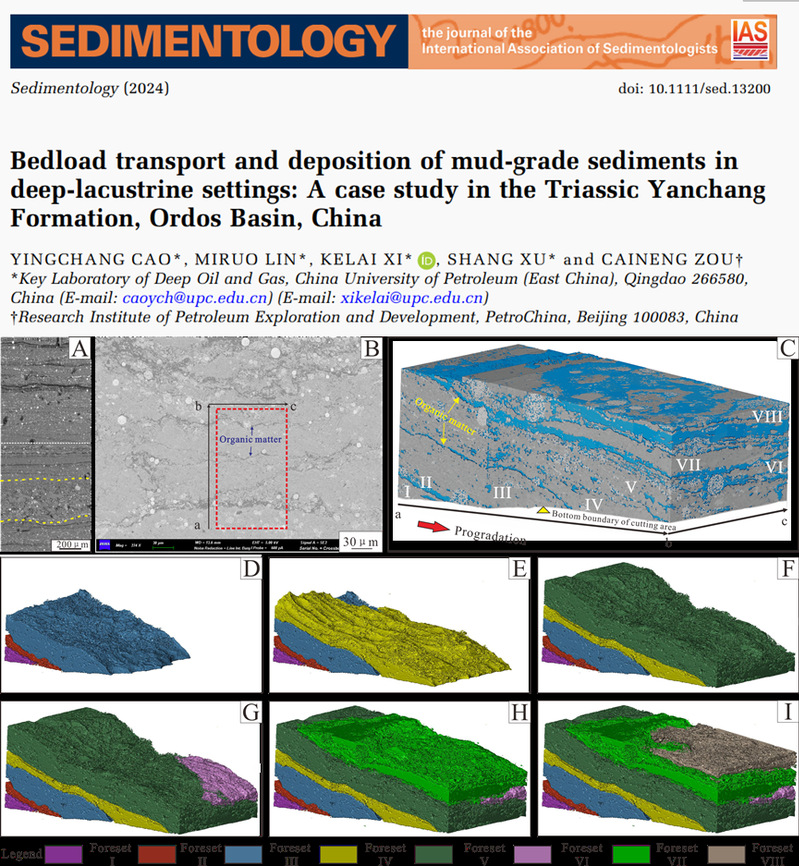Abstract
With ongoing shale oil and gas exploration and development across the world, the sedimentology of deep-water fine-grained sedimentary rocks remains an important focus for research. In deep-lacustrine settings, in particular, mud-grade sediments are distributed widely. However, the very fine particle size of mud-grade sediments limits the clear identification of micro-sedimentary structure; the mud-grade sediments are in most facies models believed to be deposited via suspension settling in deep-lacustrine settings. In this study, thin-section observations, advanced mineral identification and characterization system analyses, scanning electron microscopy observations and three-dimensional reconstruction analysis by a focused ion beam-electron beam dual-beam system were conducted on deep-lacustrine mud-grade sediments of the Chang 73 sub-member of Triassic Yanchang Formation in the Ordos Basin. Through this multi-proxy approach, evidence of bedload transport of the mud-grade sediments in the deep-lacustrine settings is provided. During the deposition of deep-lacustrine sediments, a significant amount of volcanic material within the mud-grade sediments provided large quantities of high-valence metal cations into the lake waters, which promoted the formation of flocs through electrostatic forces. Subsequently, these flocs are transported as bedload and deposited on the substrate, forming numerous floccule ripples in the deep-lacustrine settings. When floccule ripples form, the flocs continuously pass over the ripple crests under the action of underflow and accumulate downward along the sloping surface of the floccule ripples, developing multiple foresets. Lateral migration and frontal progradation of foresets results in multiple stacked and laterally-connected foresets, ultimately controlling the accumulation and preservation sites of these deep-lacustrine mud-grade sediments. The discovery of floccule ripples and foresets confirms a dynamic deep-lacustrine setting, in which the mud-grade particles can be transported as bedload under the action of underflow and then deposited. A new understanding of the sedimentary process of deep-lacustrine mud-grade particles provides a theoretical basis for clarifying the distribution of mineral composition and organic matter content in mud-grade sediments. It further supports the prediction of favourable shale oil/gas reservoirs, promoting the efficient exploration and development of shale oil and gas resources, globally.

Paper Information:
Ying-Chang Cao*, Mi-Ruo Lin, Ke-Lai Xi*, Shang Xu, Cai-Neng Zou, 2024. Bedload transport and deposition of mud-grade sediments in deep-lacustrine settings: A case study in the Triassic Yanchang Formation, Ordos Basin, China. Sedimentology, https://doi.org/10.1111/sed.13200.

